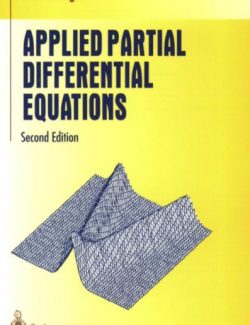Description
This work is characterized by the fact that most of the material has a modular nature that allows different configurations and emphasis in the course (theory, applications, techniques or concepts). At the end of each chapter are group projects that are related to the material in the chapter. A project may imply a more challenging application, deepen the theory, or present more advanced issues of differential equations.
The Fundamentals of Differential Equations and Problems with Values in the Border, consists of the main text and three additional chapters (problems of eigenvalues and Sturm-Liouville equations, stability of Autonomous Systems, and Theory of Existence and uniqueness).













Leave us a comment
No Comments